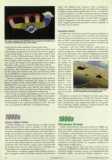In 1965, NASA sponsored a project to develop a software program that would provide a unified approach to computerized structural analysis. The resulting software was called NASA Structural Analysis Program, or NASTRAN.
The program was developed by NASA’s Goddard Space Flight Center for spacecraft design, mathematically analyzing a design and predicting how it will perform under particular stresses and strains.
NASTRAN turned out to be one of the most widely used NASA software programs ever developed. It has been applied to automobile design — most U.S. auto makers employ NASTRAN or other NASA-developed software in their design processes — as well as trucks, railroad cars, ships, steam turbines, bridges, office buildings, and machine tools. It was even used in the design of the appropriately named “Space Mountain” roller coaster at Florida’s Walt Disney World.
[img]The support structure for Disney World's Space Mountain roller coaster was designed with help from NASTRAN.[/img]
Designed by WED Enterprises, a division of Walt Disney Productions, Space Mountain required a support structure for the tracks that would be safe, but not overstrong. WED chose NASTRAN to simplify analysis of the structure, saving labor time and materials.
There are hundreds of other examples in which industry has used NASTRAN, including the design of General Motors’ Cadillac Seville. Honda R&D Computer Ltd. used NASTRAN for more than a decade in structural analysis of auto bodies, motorcycles, tires, wheels, and engines, and Ford Motor Co. used it to analyze auto frame buckling and stress, and static analyses of suspension components.
One of the companies participating in the 1965 NASA project was MacNeal-Schwendler Corp. (MSC) of Los Angeles, CA. MSC licensed the NASA technology and developed a proprietary version of NASTRAN — MSC/NASTRAN — which was introduced to the commercial market in 1971. The soft-ware, now available for Windows, is in Version 70 today.

